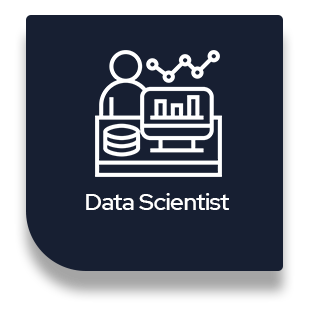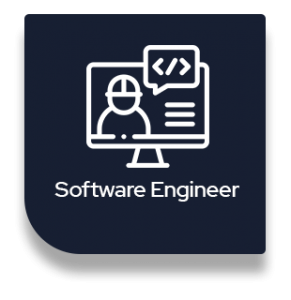Data Scientist uses data to understand and explain the phenomena around them and help organizations make better decisions. Working as a Data Scientist can be intellectually challenging, analytically satisfying, and put you at the forefront of new technological advances. As a result, Data Scientists have become more common and in demand, as big data continues to be increasingly crucial to how organizations make decisions. Here’s a closer look at what they are and do—and how to become one.
What does a Data Scientist do?
Data Scientists determine the questions their team should ask and how to answer them using data. In addition, they often develop predictive models for theorizing and forecasting.
A Data Scientist might do the following tasks on a day-to-day basis:
- Find patterns and trends in datasets to uncover insights
- Create algorithms and data models to forecast outcomes
- Use machine learning techniques to improve the quality of data or product offerings
- Communicate recommendations to other teams and senior staff
- Deploy data tools such as Python, R, SAS, or SQL in data analysis
- Stay on top of innovations in the Data Science field
Data Analyst vs. Data Scientist: What’s the difference?
The work of Data Analysts and Data Scientists can seem similar—both find trends or patterns in data to reveal new ways for organizations to make better decisions about operations. However, data Scientists tend to have more responsibility and are generally considered more senior than Data Analysts.
Data Scientists are often expected to form their questions about the data, while Data Analysts might support teams that already have set goals in mind. A Data Scientist might also spend more time developing models, using machine learning, or incorporating advanced programming to find and analyze data. Many Data Scientists can begin their careers as Data Analysts or statisticians.
Data Scientist Salary and job growth
A Data Scientist earns an average salary of $108,659 in the United States, according to Lightcast.
Demand is high for data professionals—Data Scientists’ occupations are expected to grow by 36 percent in the next ten years (much faster than average), according to the US Bureau of Labor Statistics (BLS).
The high demand has been linked to the rise of big data and its increasing importance to businesses and other organizations.
How to Become a Data Scientist
Becoming a Data Scientist requires some formal training. Here are some steps to consider.
Earn a Data Science degree.
Employers generally like to see some academic credentials to ensure you have the know-how to tackle a Data Science job, though it’s not always required. That said, a related bachelor’s degree can certainly help—try studying Data Science, statistics, or computer science to get a leg up in the field.
Sharpen relevant skills.
If you can polish your hard data skills, consider taking an online course or enrolling in a relevant boot camp. Here are some skills you’ll want to have under your belt.
Programming languages: Data Scientists can expect to use programming languages to sort through, analyze, and manage large chunks of data. Popular programming languages for Data Science include:
- Python
- R
- SQL
- SAS
Data Visualization: Creating charts and graphs is a significant part of being a Data Scientist. Familiarity with the following tools should prepare you to do the work:
- Tableau
- PowerBI
- Excel
Machine Learning: Incorporating machine learning and deep learning into your work as a Data Scientist means continuously improving the quality of the data you gather and potentially being able to predict the outcomes of future datasets. A course in machine learning can get you started with the basics.
Big Data: Some employers may want to see your familiarity with big data. Some software frameworks used to process big data include Hadoop and Apache Spark.
Communication: The most brilliant Data Scientists can only affect change if they communicate their findings well. The ability to share ideas and results verbally and in written language is an often-sought skill for Data Scientists.
Get an entry-level data analytics job.
Though there are many paths to becoming a Data Scientist, starting a related entry-level job can be an excellent first step. First, seek positions that work heavily with data, such as Data Analyst, business intelligence analyst, statistician, or data engineer. From there, you can work up to becoming a scientist as you expand your knowledge and skills.



